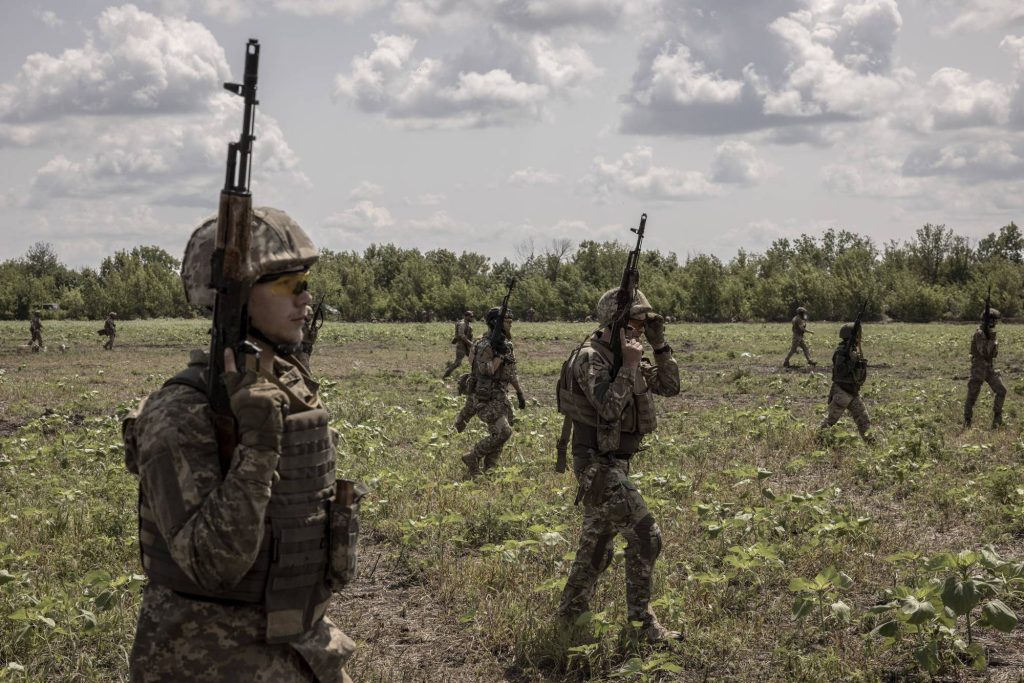On August 23rd, 1939 Nazi Germany and Soviet Russia signed the Non-Aggression Pact” which not only paved the way for Hitler’s September 1st invasion of Poland but also set the scene for the most climactic event of the twentieth century – the June 22nd, 1941 Nazi invasion of the Soviet Union. It was as cold and calculated an exercise in cynicism and hypocrisy as any in Europe’s long and undistinguished history of hypocrisy. The Pact gave time to both Berlin and Moscow in return for Poland’s land. Is something similar about to happen to Ukraine?

There is a phrase that always raises my concerns: “The official policy is…”. It normally means there is an unofficial policy which is pretty much the opposite of that stated in public. That is precisely why in mid-August there was a micro-frenzy when a senior NATO official appeared to suggest that Ukraine might have to accept the loss of land to Russia in return for membership of the Alliance. For the record, he did not say that. The official in question is known to me and he is the consummate professional. The person chairing the meeting at which he is alleged to have suggested is also one of my closest friends. The suggestion, such as it was, took place as part of a two-hour panel discussion as one of many scenarios that might transpire given the nature, scope, and levels of support for Ukraine. What the reaction did reveal is how many governments are indeed thinking along those lines.
There are certain realities that Ukraine and its Western partners must now confront. As I suggested in May, and despite the heroic efforts of Ukrainian forces, the Ukrainian counter-offensive has stalled because it never had the necessary military weight to break the Russian land bridge in eastern and southern Ukraine, let alone retake Crimea. At the forthcoming meeting of NATO defence ministers in October it will also become apparent that the Allies have already given 90% of what they are going to give Ukraine, whether it is delivered as promised or not. As the Rasputitsa or mud season begins to impose itself the war will become a stalemate. The question will then become what the Alliance and its fellow travellers can do for Ukraine come the spring and the new campaign season. A season, I might add, that will coincide with NATO’s 85th anniversary celebrations in Washington.
Read also: Ukraine-NATO: a post-Vilnius roadmap
The stalemate is about more than two exhausted armies stuck in the Ukrainian mud. The Russo-Ukraine War is also geopolitical Rasputitsa. China is determined that Russia will not lose and is supplying Moscow directly with helicopters and other vital materiel, and indirectly using North Korea as a conduit for other materiel. A “Crimea Summit” has taken place in Kyiv on August 30 with President Zelensky talking about preparations for re-taking Crimea. However, the West, for all its verbal and actual support of Ukraine, has not and is not doing enough to ensure Ukraine has any chance of reclaiming its pre-2014 borders, let alone its pre-1991 borders. The news that the Danish and Dutch will send ‘dozens’ of F-16s to Ukraine with American approval is to be welcomed, but it will not be a war game-changer.
Worse, there are countries inside the Alliance, with Belgium and a few others to the fore, who are suggesting that the war has proven Russia to be a paper tiger and that there is little urgency to fulfil the goals set out in the 2022 NATO Strategic Concept. Any strategy pause, for that is what this stalemate will amount to, will thus give Russia the time and space it needs to learn the lessons of its own incompetence and rebuild its armed forces, whatever the economic consequences. That is precisely what former Russian President Dmitry Medvedev meant when in May he suggested the war could last for decades.
There are several peace initiatives/peace feelers underway, most notably that being proposed by the Saudi Crown Prince Mohammed bin Salman. What strikes me about all these peace initiatives is how very European they are. The history of European peace treaties are traditionally built on a celebrated lack of principle by which the aggressor is partially rewarded for its aggression in return for the aggressed being partially compensated. Even the Congress of Vienna and the treatment of defeated Nazi Germany by the Western Allies fitted that pattern. The only ‘peace’ treaty that did not was the 1919 Treaty of Versailles and that simply created the conditions for World War Two.
Read also: European perspective(s) on defense and security
Therefore, the governments saying that, “The official policy is…” are looking at alternatives. This is because Ukraine’s backers are not going to step up further which means that when they say it is up to Ukraine to decide when the war ends, it isn’t. President Zelensky clearly smells the West’s, most notably the American coffee which is why he suggested that a political solution to Crimea was not only possible, but preferable. At some point there will be a ceasefire, that will turn into some form of typically European ‘peace’ by which Russia gets to hold on to some of the Ukrainian land it has conquered in return for what is left of Ukraine being offered NATO membership.
And, if Ukraine does not get NATO membership? It will be conquered peace by peace. It is as clear as mud!
